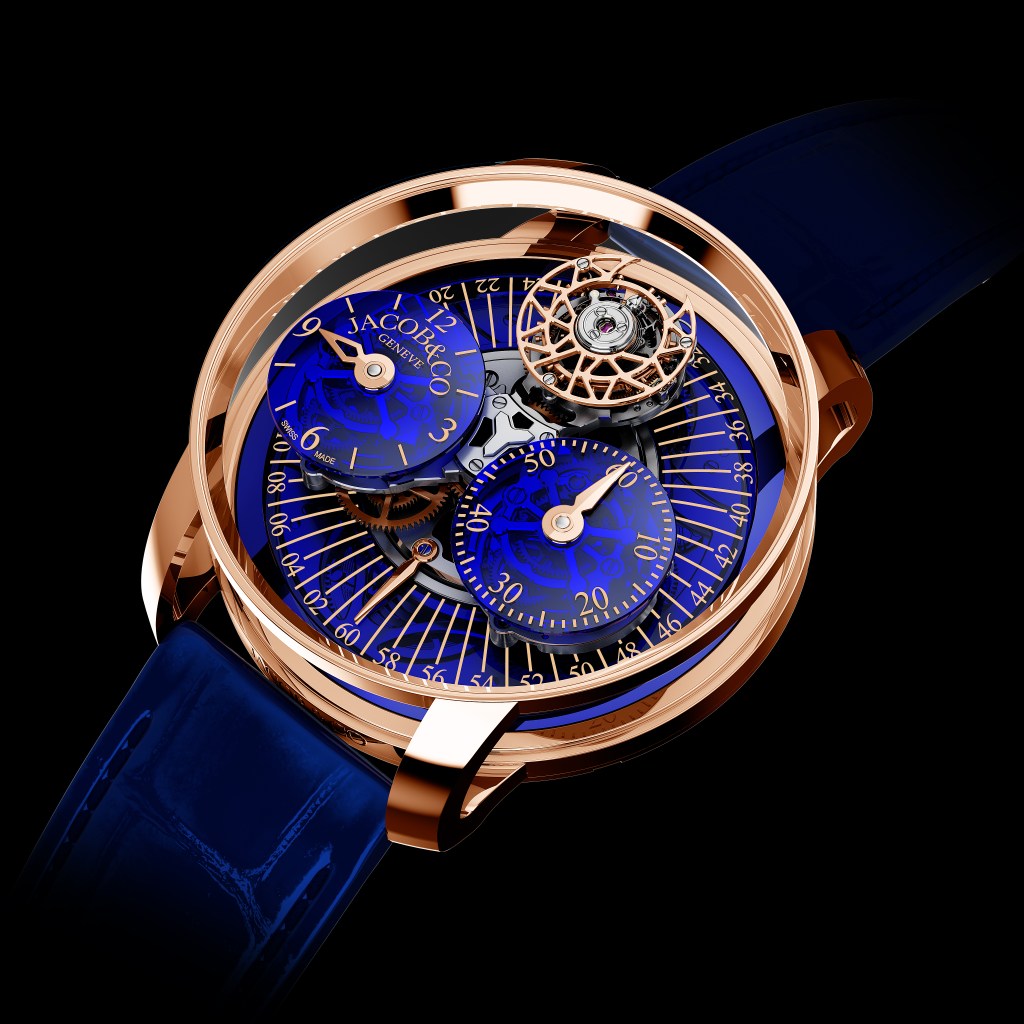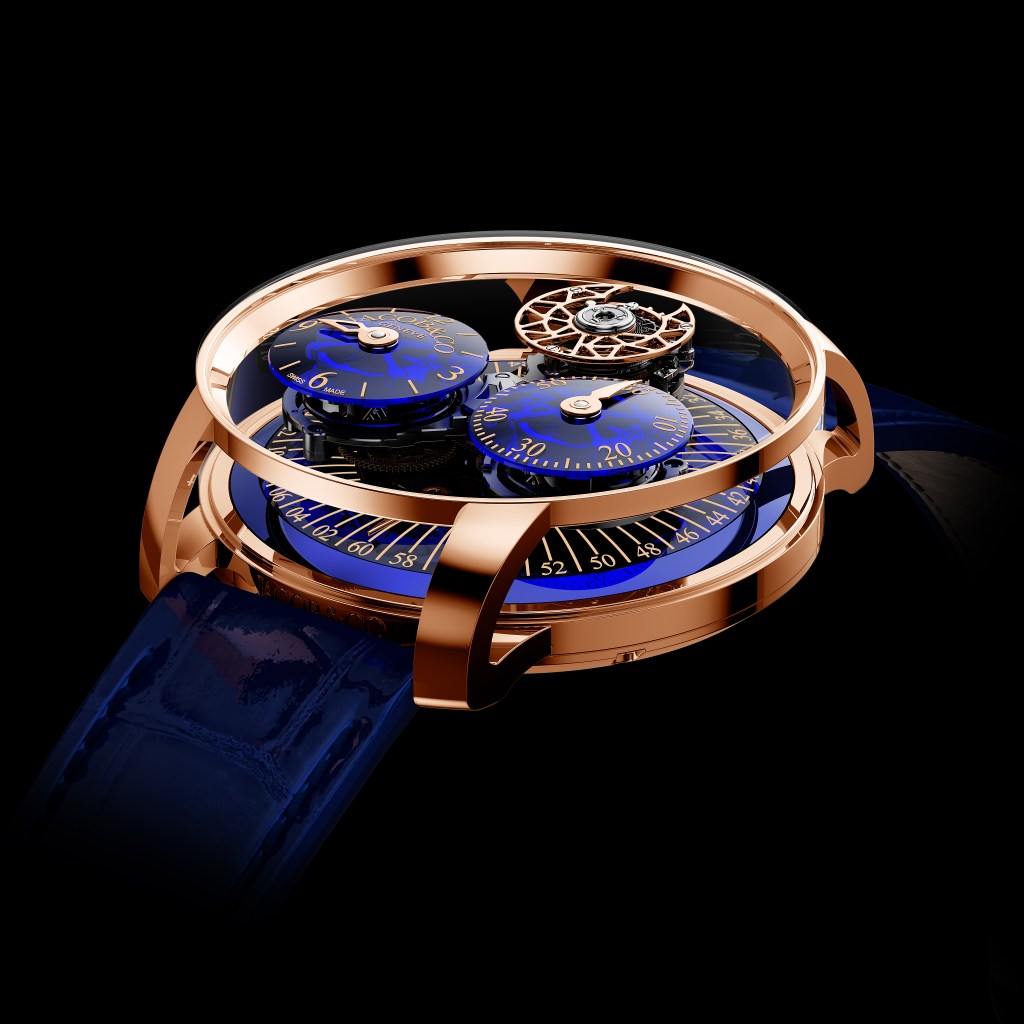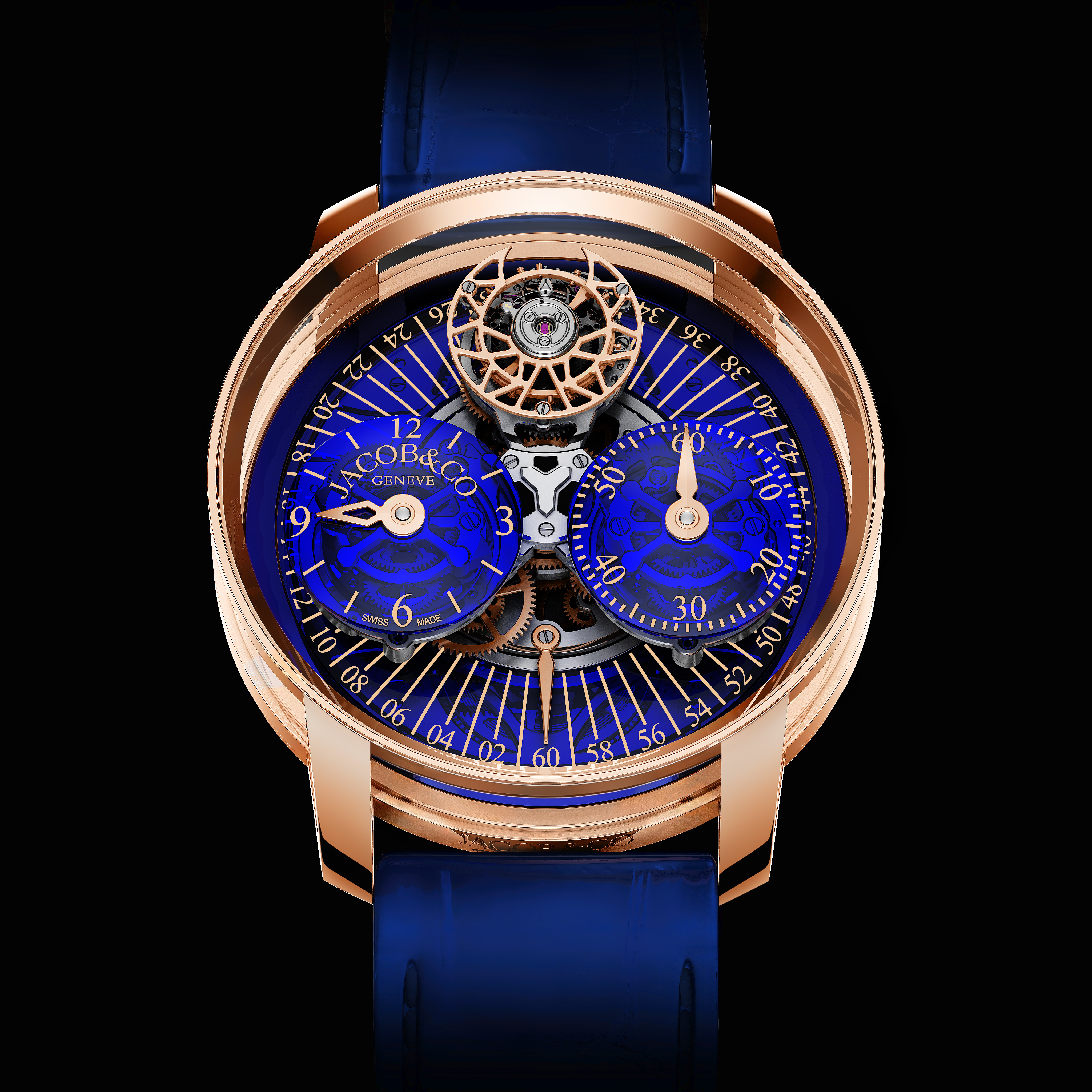Jacob & Co.’s Latest Watch Features Sapphire Subdials That Float Like Orbiting Planets
Witness this $280,000 timepiece’s mechanical majesty in action.

The 2024 edition of Watches & Wonders, the annual Swiss watch fair that temporarily transforms Geneva into a timepiece paradise, opens to the public from April 13-15. Among the many horological marvels that will be on-display is what Jacob & Co. has dubbed “the most advanced Astronomia in history.”
That’s saying something, as even the very first Astronomia model seemed almost impossibly intricate. The Jacob & Co. Astronomia Tourbillon, which debuted back in Baselworld 2014, set the blueprint for the Astronima family with a satellite display featuring components that revolve around the dial in a fluid, gaze-commanding dance.

Many iterations have followed, including the $780,000 Astronomia Maestro Worldtime Tourbillon that took its planetary inspirations quite literally with a miniature globe serving as the watch’s world time function and an astronaut figurine orbiting the Milky Way aventurine dial.
Today Jacob & Co. unveils the Astronomia Régulateur. The watch-literate will recognize the regulator design, which dictates that the hours, minutes and seconds hands are non-coaxial, i.e. each hand is fixed to and rotating about a different point, as Watch Affinity points out.
Many regulator configurations are possible, but a common example sees the minutes hand fixed to the center of the dial and the seconds and hours hands placed on their own subdials. According to Jacob & Co., the origin of regulator watches can be traced back to mother clocks in industrial watch workshops. The three-indication design ensured that workers could read the mother clock from several meters away while calibrating, or regulating, the watches that they were crafting.

The Jacob & Co. Astronomia Régulateur takes the regulator design to a beautiful and complex new level by putting the separate hours, minutes and seconds indicators in 3D with the most evolved version of the Astronomia blueprint.
Its engine is the 552-piece caliber JCAM56, featuring a world-first rotation speed of 60 seconds and three three arms. One arm is flying tourbillon that completes one rotation per minute on two axes—Jacob & Co. notes that this technically makes the timepiece a double-axis flying tourbillon. The other two arms show the minutes and hours on brilliant blue polycarbonate subdials with white printed scales.
The third seconds indication of Astronomia Régulateur was an important focus of Jacob & Co., as the seconds indication of the original regulator mother clocks were what watchmakers and workers set their work against. On the Astronomia Régulateur’s vertical movement’s base, a long, elegant golden hand sticks points to a domed blue and translucent ring: the seconds scale. That ring completes a counter-clockwise rotation every 60 seconds.
Words and images can describe and depict the Astronomia Régulateur’s 18K rose case and caseback, single-block sapphire caseband, polished titanium base, triangular red gold Dauphine-style hands, blue alligator leather strap, and 18K rose gold buckle. But to truly appreciate its mechanical majesty, you need to see it in action via the video below:
Limited to 250 examples priced at $280,000 each, the Jacob & Co. Astronomia Régulateur is available to purchase now.
